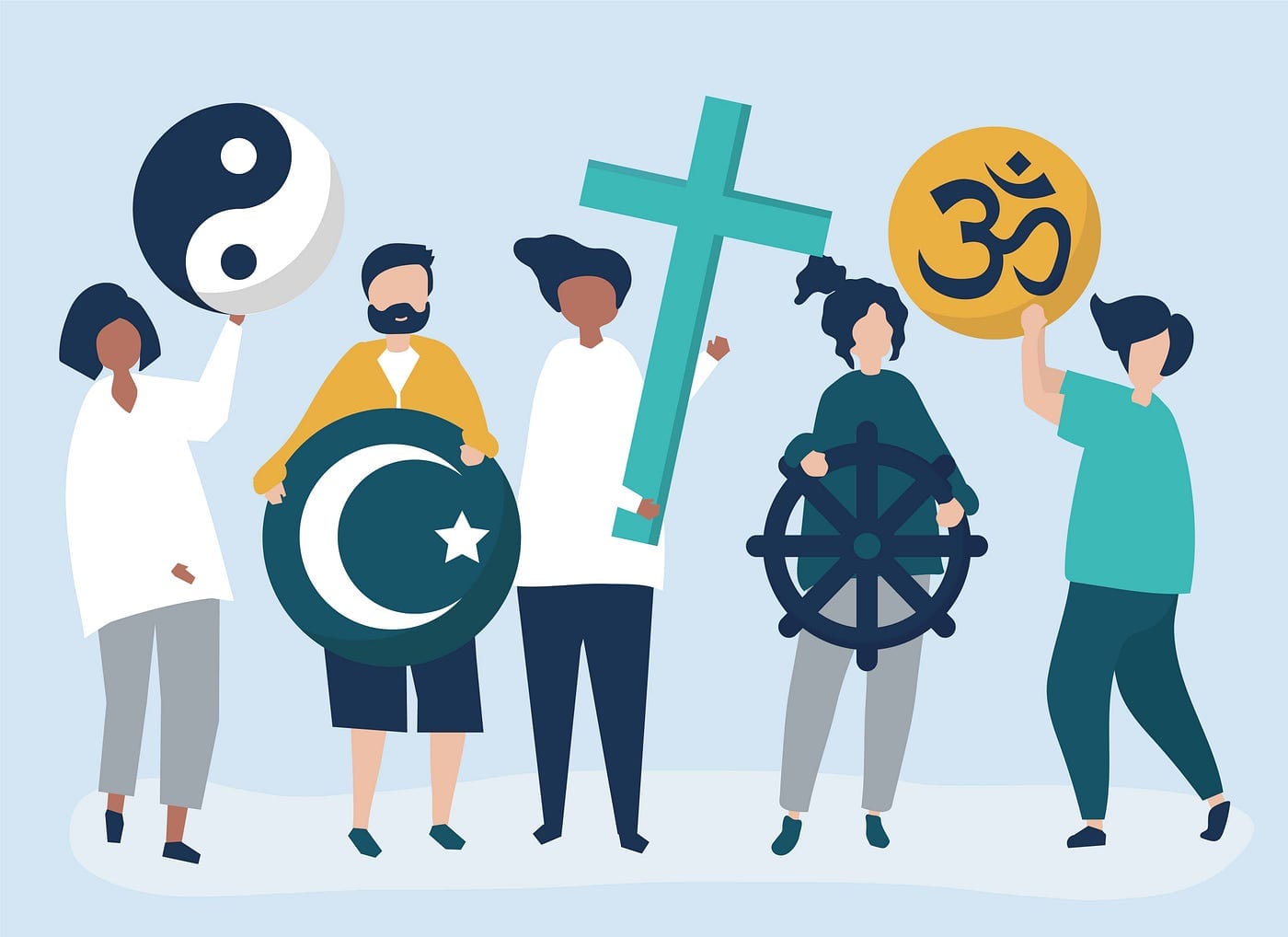Imagine strolling through a bustling intersection, a tapestry of humanity woven from diverse backgrounds. Each individual carries their own unique cultural threads—from their fashion choices to their communication styles. Now, envision unconsciously evaluating these individuals based solely on the norms of your own cultural background. That, in essence, is ethnocentrism—a natural human tendency that profoundly shapes our worldview. Let’s delve into the intricacies of ethnocentrism and its implications for understanding our interconnected world.
Ethnocentrism in AP Human Geography
Have you ever noticed how individuals sometimes, often subconsciously, judge other cultures by comparing them to their own? This tendency, known as ethnocentrism, acts as a lens through which we perceive and interact with the world around us. In AP Human Geography, we explore how this deeply ingrained human trait shapes our understanding of cultural diversity and influences our interactions with individuals from different backgrounds.
Imagine a person who grew up eating rice as a dietary staple. This person might find it unusual to encounter cultures where bread takes center stage at mealtimes. While not inherently malicious, such reactions, rooted in ethnocentrism, can lead to misunderstandings and biases if left unchecked.
Why Does It Matter?
In an increasingly globalized world, the ability to navigate cultural differences is paramount. Ethnocentrism has the potential to erect barriers to communication, hinder cooperation, and even ignite conflict.
Consider, for instance, how a business deal could collapse due to one party misinterpreting the cultural cues of another. Similarly, history offers somber examples of conflicts sparked by ethnocentric beliefs, where one group, blinded by its own cultural lens, deems another as inferior.
Breaking Down the Walls
The good news is that we possess the capacity to recognize and challenge ethnocentric thinking. Here are several pathways to cultivate a more inclusive and understanding worldview:
- Travel and Exploration: Immersing oneself in different cultures firsthand is an unparalleled way to broaden perspectives. Traveling to new places, even within our local communities, can unveil the richness and complexity of human experience.
- Education is Key: Knowledge is a powerful antidote to ethnocentrism. Reading books, engaging with documentaries, and immersing oneself in diverse cultural narratives through various media can illuminate the tapestry of human experience.
- Conversation and Connection: Engaging in open and respectful dialogue with individuals from diverse backgrounds provides invaluable insights into their worldviews. Active listening and genuine curiosity can shatter stereotypes and pave the way for deeper understanding.
- Critical Self-Reflection: Turning inward and examining our own ingrained biases is essential. We must question the cultural norms we often take for granted and consider how our upbringing might color our views of others.
The Bottom Line
Ethnocentrism is a multi-faceted concept with far-reaching implications for individuals and societies alike. By developing an awareness of its influence, we can strive to become more open-minded, empathetic, and culturally sensitive global citizens. The beauty of our world lies in its vibrant tapestry of cultures—each with its unique contributions. Let’s embrace these differences and approach them as opportunities for learning and growth.
What is Ethnocentrism in Human Geography?
In essence, ethnocentrism describes a worldview where one’s own culture serves as the primary lens through which all other cultures are judged. Imagine viewing a vibrant painting through sunglasses tinted with your favorite color—you might miss the nuances and beauty of the other colors, believing your perspective is the most accurate. Ethnocentrism functions similarly, leading individuals to perceive their own cultural norms, values, and practices as inherently “normal” or “right”.
This perspective can manifest in subtle ways. For instance, have you ever heard someone react to a custom from another country with a dismissive “That’s weird!”? This seemingly innocuous statement often betrays an underlying ethnocentric bias, measuring another culture against the yardstick of one’s own experiences.
It’s important to note that ethnocentrism isn’t always a conscious act of malice. It frequently stems from an unconscious bias, a product of our upbringing and the cultural norms we’ve internalized. However, regardless of intention, ethnocentrism can hinder our ability to truly appreciate and understand different cultures, leading to misunderstandings, prejudice, and even conflict.
Cultural relativism emerges as a powerful antidote to ethnocentrism. It urges us to shed those tinted glasses and approach each culture on its own terms. Instead of immediately labeling practices as “right” or “wrong”, cultural relativism encourages us to ask, “Why do people in this culture do things this way? What is the meaning behind their customs?” By embracing such an approach, we open ourselves up to the richness and diversity of human experience.
Of course, embracing cultural relativism doesn’t require us to abandon our own values or blindly accept all cultural practices. It simply calls for a more nuanced understanding of the world—one that recognizes the validity of different ways of life while upholding our own ethical compass.
What is an Example of Ethnonationalism AP Human Geography?
Ethnonationalism, a potent blend of ethnicity and nationalism, posits that a nation’s identity is deeply intertwined with shared ethnic heritage. This ideology, while capable of fostering unity, can also be a source of tension and conflict. The complex relationship between Israel and Palestine offers a poignant example of ethnonationalism in action.
This conflict, with roots stretching back over a century, centers around a struggle for land and self-determination, fueled in part by ethnonationalist sentiments on both sides.
For Jewish people, the land holds profound historical and religious significance, considered their ancestral homeland—a place of refuge and rebirth after centuries of persecution. This deep connection to the land, amplified by the horrors of the Holocaust, played a pivotal role in the establishment of Israel in 1948.
However, the creation of Israel had profound consequences for the Palestinian people, who had long called this land home. Many were displaced, leading to a large Palestinian diaspora, yearning for a homeland and the right to self-determination.
This ongoing conflict exemplifies the complexities of ethnonationalism. It underscores how a shared connection to the same land, rooted in different historical narratives and ethnic identities, can lead to protracted conflict and suffering.
It’s crucial to remember that this is just one example of ethnonationalism’s impact on the world stage. While it highlights the ideology’s potential to incite division and conflict, it’s essential to approach such complex geopolitical situations with nuance and a recognition of the multifaceted historical factors at play.
What is the Difference Between Ethnocentrism and Cultural Relativism in AP Human Geography?
Imagine encountering someone who insists that their preferred method of eating pizza—with a fork and knife—is the only “correct” way. This unwavering belief in the superiority of one’s own cultural norms exemplifies ethnocentrism. While a natural human inclination, ethnocentrism can lead to misunderstandings and prejudices if left unchecked.
Cultural relativism, on the other hand, encourages us to embrace the dazzling diversity of cultures around the world. Instead of clinging to the belief that our way is the “right” way, cultural relativism invites us to journey into the worldviews of others, appreciating their unique perspectives and ways of life.
Ethnocentrism vs Cultural Relativism: A Comparison
| Feature | Ethnocentrism | Cultural Relativism |
|---|---|---|
| Basic Idea | “My culture is the standard.” | “All cultures are valid and should be understood on their own terms.” |
| How it Understands Other Cultures | Judges them based on its own values and norms. | Tries to see them from their own internal logic and history. |
| Potential Outcomes | Can lead to prejudice, discrimination, and even conflict. | Promotes understanding, tolerance, and respect between cultures. |
The Takeaway
Most of us likely fall somewhere along the spectrum between ethnocentrism and cultural relativism. The key is to recognize the limitations of a purely ethnocentric worldview and cultivate a more culturally relative perspective. This shift in thinking is crucial for navigating our increasingly interconnected world.
What is Xenocentrism in AP Human Geography?
While ethnocentrism centers on the belief in one’s own cultural superiority, xenocentrism flips the script, leading individuals to perceive other cultures as inherently superior to their own.
Imagine being utterly captivated by another culture, convinced that their art, music, or even social customs are inherently more refined and sophisticated than those found in your own culture. This fascination with all things foreign lies at the heart of xenocentrism.
Xenocentrism can manifest in various ways. Some individuals might develop a penchant for foreign films or music, convinced of their inherent superiority. Others might gravitate towards the cuisine or fashion of another country, viewing it as more exotic or authentic.
The reasons behind xenocentrism are varied and complex. Some experts posit that it might stem from a sense of dissatisfaction or disillusionment with one’s own culture. Perhaps an individual perceives their culture as stifling, materialistic, or lacking the allure of the “exotic”, leading them to romanticize the perceived glamour of foreign cultures.
Globalization, too, plays a role in shaping xenocentric attitudes. As we encounter a constant stream of images and ideas from around the globe, it’s easy to develop a sense of awe for cultures that appear vastly different from our own, especially if we feel our own cultural identity is being diluted.
It’s worth noting that xenocentrism, just like ethnocentrism, has its pitfalls. It can lead to the romanticization of other cultures, neglecting their complexities and challenges. It can also fuel cultural appropriation—adopting elements of a culture without truly understanding or respecting their significance.
Ultimately, understanding both ethnocentrism and xenocentrism is crucial for navigating our increasingly interconnected world with sensitivity and respect.
What are Some Ethnocentrism Examples?
We’ve likely all experienced moments when encountering cultural differences evokes a sense of discomfort or judgment. These reactions often stem from ethnocentrism—our natural inclination to view our own cultural norms as the default setting for how the world should operate.
Consider the experience of trying a new cuisine for the first time. An ethnocentric response might involve recoiling at the smell or appearance of the food, dismissing it as unappetizing simply because it deviates from familiar culinary traditions.
Similarly, observing different clothing styles can trigger ethnocentric judgments. Someone accustomed to Western fashion might view traditional attire from another culture as “strange” or “outdated” without considering the cultural significance and history embedded within those garments.
Even parenting styles, often deeply ingrained within cultural norms, can be subject to ethnocentric scrutiny. What one culture considers appropriate discipline, another might perceive as overly harsh or lenient. These varied approaches to child-rearing highlight the importance of cultural relativism in understanding the diverse ways in which societies function.
Here are a few additional examples of ethnocentrism in action:
| Situation | Ethnocentric Thought | Why It’s Problematic |
|---|---|---|
| Encountering a new language | “They speak so fast and loud! It’s just noise.” | Disregards the beauty and complexity of a different language system. |
| Observing different religious practices | “Their religious beliefs are strange and illogical.” | Fails to acknowledge the profound role religion plays in shaping cultural values and worldviews. |
| Learning about different forms of greeting | “Why don’t they shake hands like we do?” | Disregards the diverse ways in which cultures express respect and build rapport. |
So, How Can We Combat Ethnocentrism?
- Cultivate Self-Awareness: Recognizing our own biases is the first step towards dismantling them.
- Embrace Curiosity: Approach other cultures with a genuine desire to learn and understand, asking questions and engaging in meaningful conversations.
- Challenge Assumptions: When we encounter cultural practices that seem strange or different, let’s pause before passing judgment and instead explore the historical, social, or religious context that might illuminate their significance.
Ethnocentrism is a complex issue, and researchers are continually deepening our understanding of its roots and far-reaching impacts. However, by acknowledging its influence and actively cultivating a more culturally relative worldview, we can foster greater understanding, respect, and empathy in an increasingly interconnected world.
What Defines Ethnocentrism?
At its core, ethnocentrism is the belief that one’s own culture serves as the gold standard by which all other cultures should be measured. It’s like viewing the world through a pair of glasses tinted with our own cultural biases, leading us to judge other cultures based on the values and norms we hold dear. While it might seem like a harmless tendency at first glance, ethnocentrism can pave a slippery slope towards prejudice, discrimination, and even conflict.
Imagine, for instance, a group of individuals raised with the ingrained belief that eating meat is essential for a healthy diet. They might view vegetarianism or veganism with suspicion or even disgust, failing to consider the cultural, environmental, or ethical motivations behind these choices.
It’s important to acknowledge that recognizing ethnocentric tendencies within ourselves doesn’t make us bad people. It simply marks the starting point of a journey towards self-reflection and growth. By acknowledging our own biases, we can begin to dismantle the barriers that prevent us from fully appreciating the mosaic of cultures that make up our world.
Cultural relativism emerges as a powerful antidote to ethnocentrism, encouraging us to shed those tinted glasses and embrace the notion that each culture possesses its own inherent value and validity. It’s about recognizing that there are countless ways of living, believing, and experiencing the world, none inherently superior to another.
However, it’s also important to note that cultural relativism doesn’t equate to blind acceptance of all cultural practices. We can appreciate the nuances of different cultures while still holding true to our own ethical compass. It’s about seeking understanding and fostering respectful dialogue, even when faced with cultural differences that challenge our own deeply held beliefs.
So, how do we embark on this journey of unlearning ethnocentrism and embracing a more inclusive worldview? It begins with curiosity and a willingness to step outside our comfort zones. Traveling to new places, engaging with diverse forms of art and literature, and even having conversations with people from different backgrounds can broaden our perspectives and challenge our preconceived notions.
The more we immerse ourselves in the richness of other cultures, the more we begin to realize that our way of life is just one of many—not the only way, and certainly not necessarily the “best” way. It’s an ongoing process of unlearning and relearning, a journey towards a more nuanced and compassionate understanding of our interconnected world.
What is the Main Idea of Ethnocentrism?
Ethnocentrism, a universal human tendency, describes the inclination to view our own culture as the yardstick against which all others are judged. We grow up immersed in a particular set of values, traditions, and ways of life—it’s our comfort zone, our “normal.” This ingrained familiarity often leads us to perceive anything that deviates from our cultural norms as strange, wrong, or even inferior.
To illustrate, consider how we develop culinary preferences. If we grow up eating spicy food, we might find bland dishes unappetizing. Similarly, if our culture values individualism, we might struggle to understand the concept of collectivism, which prioritizes the needs of the group over the individual.
Key Takeaways:
- Ethnocentrism is a form of unconscious bias. It’s not always about intentionally denigrating other cultures; it often stems from a lack of exposure and a tendency to view the world through a narrow lens.
- Recognizing our own ethnocentric tendencies is crucial for mitigating their negative effects. It’s about acknowledging that our way of life is not the only valid way and that different doesn’t necessarily equate to bad or wrong.
- Embracing diverse perspectives and seeking to understand the world through the eyes of others can broaden our horizons, challenge our assumptions, and foster greater empathy and compassion.
Unpacking the Implications
While ethnocentrism might seem like a harmless quirk of human nature, it can have profound and often harmful consequences.
- Conflict and Violence: History offers countless examples of conflicts sparked by ethnocentric beliefs. When one group views its own culture as superior and seeks to impose its values on others, it can create breeding grounds for tension, prejudice, and ultimately, violence.
- Discrimination and Inequality: Ethnocentric attitudes often underpin discriminatory practices and policies. When individuals or groups are deemed inferior based on their cultural background, it can lead to social exclusion, limited opportunities, and systemic injustices.
- Misunderstanding and Mistrust: Ethnocentrism thrives on assumptions and stereotypes. When we judge others based on preconceived notions rather than engaging with them as individuals, it creates barriers to communication, understanding, and the development of meaningful relationships.
Breaking Free from Ethnocentric Thinking
Challenging our own ingrained biases is an ongoing process that requires conscious effort and a willingness to step outside our comfort zones. Here are a few strategies to combat ethnocentrism:
- Embrace Cultural Immersion: Seek out opportunities to engage with diverse cultures through travel, the arts, literature, cuisine, and meaningful conversations with people from different backgrounds.
- Become a Lifelong Learner: Expanding our knowledge of history, geography, religion, and sociology can provide valuable context for understanding the nuances of different cultures and the historical forces that have shaped them.
- Challenge Your Assumptions: The next time you encounter a cultural practice that seems strange or different, pause before passing judgment. Instead, try to understand the reasons behind it. What cultural values or historical experiences might inform this practice?
By cultivating a more nuanced and compassionate understanding of the world, we can bridge cultural divides, dismantle stereotypes, and foster a more just and equitable society.
Which of the Following is an Example of Ethnocentrism?
Ethnocentrism, a pervasive human tendency, manifests as the belief in the inherent superiority of one’s own culture. This bias can lead individuals to judge other cultures based on their own cultural norms, values, and beliefs. Such judgments often result in misunderstandings, fueling prejudice and discrimination.
Here are a few scenarios that illustrate ethnocentrism in action:
- Scenario 1: A tourist visiting a foreign country complains loudly about the local cuisine, deeming it “weird” and “unappetizing” because it differs from their accustomed palate. This reaction reflects an ethnocentric bias—an inability to appreciate the culinary traditions of another culture through a lens beyond their own.
- Scenario 2: An individual criticizes another culture’s traditional clothing, considering it “backward” or “oppressive” without understanding the historical, religious, or social significance those garments might hold. This judgment reflects an ethnocentric perspective that fails to consider the cultural context of clothing choices.
- Scenario 3: A person dismisses the music of another culture as “just noise” because it doesn’t conform to their preferred musical styles or genres. This dismissive attitude betrays an ethnocentric bias, an inability to appreciate the artistic merit and cultural significance of music from a different tradition.
These examples highlight how ethnocentrism can manifest in subtle yet insidious ways, often stemming from a lack of exposure to and understanding of different cultures.
While ethnocentrism is a natural human tendency, recognizing and challenging our own biases is essential for cultivating greater cultural sensitivity and fostering positive cross-cultural interactions.
What is Ethnocentrism vs. Cultural Relativism?
Navigating the complexities of a world brimming with diverse cultures can be challenging, often leading us to grapple with our own ingrained biases. Two contrasting perspectives, ethnocentrism and cultural relativism, provide frameworks for understanding how we approach and evaluate different cultures.
Think of ethnocentrism as viewing the world through a pair of glasses tinted with the colors of our own culture. It’s the natural human tendency to perceive our own cultural norms, values, and beliefs as the “default” setting, the “right” way of doing things. This perspective can lead us to judge other cultures based on how well they align with our own.
Cultural relativism, on the other hand, urges us to remove those tinted glasses and embrace the kaleidoscope of human experience. It’s about recognizing that each culture possesses its own unique history, values, and ways of navigating the world—none inherently superior or inferior to another. Instead of imposing our own cultural yardstick on others, cultural relativism encourages us to appreciate the richness and validity of different ways of life.
Ethnocentrism vs. Cultural Relativism: A Closer Look
| Feature | Ethnocentrism | Cultural Relativism |
|---|---|---|
| Core Belief | “My culture is the standard by which others should be judged.” | “All cultures are equally valid and should be understood on their own terms.” |
| Approach to Other Cultures | Judges and evaluates based on own cultural norms. | Seeks to understand practices and beliefs within their cultural context. |
| Potential Outcomes | Can lead to misunderstandings, prejudice, and discrimination. | Promotes tolerance, empathy, and respectful cross-cultural dialogue. |
It’s important to note that embracing cultural relativism doesn’t require us to abandon our own values or condone practices we find unethical. It’s about acknowledging that our way of life is just one of many valid approaches to navigating the complexities of the human experience.
The Importance of Finding Balance
While most of us likely fall somewhere along the spectrum between ethnocentrism and cultural relativism, cultivating an awareness of these contrasting perspectives is crucial for fostering more compassionate and productive cross-cultural interactions.
By recognizing the limitations of ethnocentrism and embracing the principles of cultural relativism, we can move towards a world where diversity is celebrated, understanding prevails, and respect bridges the divides between us.
What Does Ethnocentricity Mean?
Ethnocentricity, often used interchangeably with the term ethnocentrism, refers to the deeply ingrained human tendency to view our own culture as the norm, the standard by which all other cultures are measured. This often unconscious bias leads us to judge other cultures based on the values, beliefs, and practices that we hold dear, potentially resulting in misunderstandings, prejudice, and even conflict.
Imagine, for instance, a scenario where someone raised in a culture that values direct communication misinterprets the subtle cues and indirect language common in another culture. They might perceive this indirectness as evasive, dishonest, or even rude, failing to recognize that different cultural norms govern these communication styles.
It’s important to note that ethnocentricity doesn’t necessarily stem from malice or an intentional desire to denigrate other cultures. It often arises from a lack of exposure to different ways of life and a tendency to view the world through a narrow lens shaped by our own upbringing and experiences. We internalize the norms of our own culture—from our eating habits to our social customs—and unconsciously use them as a yardstick against which we measure the “other.”
The problem with ethnocentricity is that it can create formidable barriers between people. When we’re convinced that our way of life is inherently superior, it becomes challenging to approach other cultures with an open mind and a genuine desire to understand. This can lead to:
- Communication breakdowns: Differing cultural norms can lead to misinterpretations, misunderstandings, and a breakdown in communication.
- Stereotypes and prejudice: Ethnocentricity often fuels the creation and perpetuation of stereotypes—oversimplified and often inaccurate generalizations about entire groups of people.
- Discrimination and inequality: When ethnocentric beliefs translate into action, they can manifest as discrimination—treating individuals or groups unfairly based on their cultural background.
Cultivating an Awareness of Our Own Biases
Recognizing ethnocentricity within ourselves is not about self-recrimination but rather an essential step towards personal growth and fostering more positive cross-cultural interactions. Here are a few strategies to challenge our own ethnocentric tendencies:
- Embrace Curiosity: Instead of immediately judging cultural practices that differ from our own, let’s approach them with a spirit of curiosity. Why do people in this culture do things this way? What historical, social, or religious factors might inform their customs?
- Seek Out Diverse Perspectives: Reading books, watching documentaries, traveling to new places, and engaging in conversations with people from different backgrounds can broaden our horizons and challenge our preconceived notions.
- Practice Empathy: Putting ourselves in the shoes of others—trying to see the world through their eyes—can help us develop a more nuanced and compassionate understanding of different cultures.
By acknowledging our own ethnocentric biases and actively seeking out diverse perspectives, we can dismantle the walls that divide us and cultivate a world where cultural differences are celebrated, respected, and embraced as opportunities for growth, learning, and understanding.
Remember the Internal Link!
Take your knowledge of acculturation in AP Human Geography to the next level by clicking the link!
- Discover Northern Pakistan’s Hidden Gems: Your Ultimate Guide - March 27, 2025
- Explore Eastern Canada: Unforgettable Adventures Await - March 27, 2025
- Unlock New St. John’s Potential: Education & Faith - March 27, 2025
















